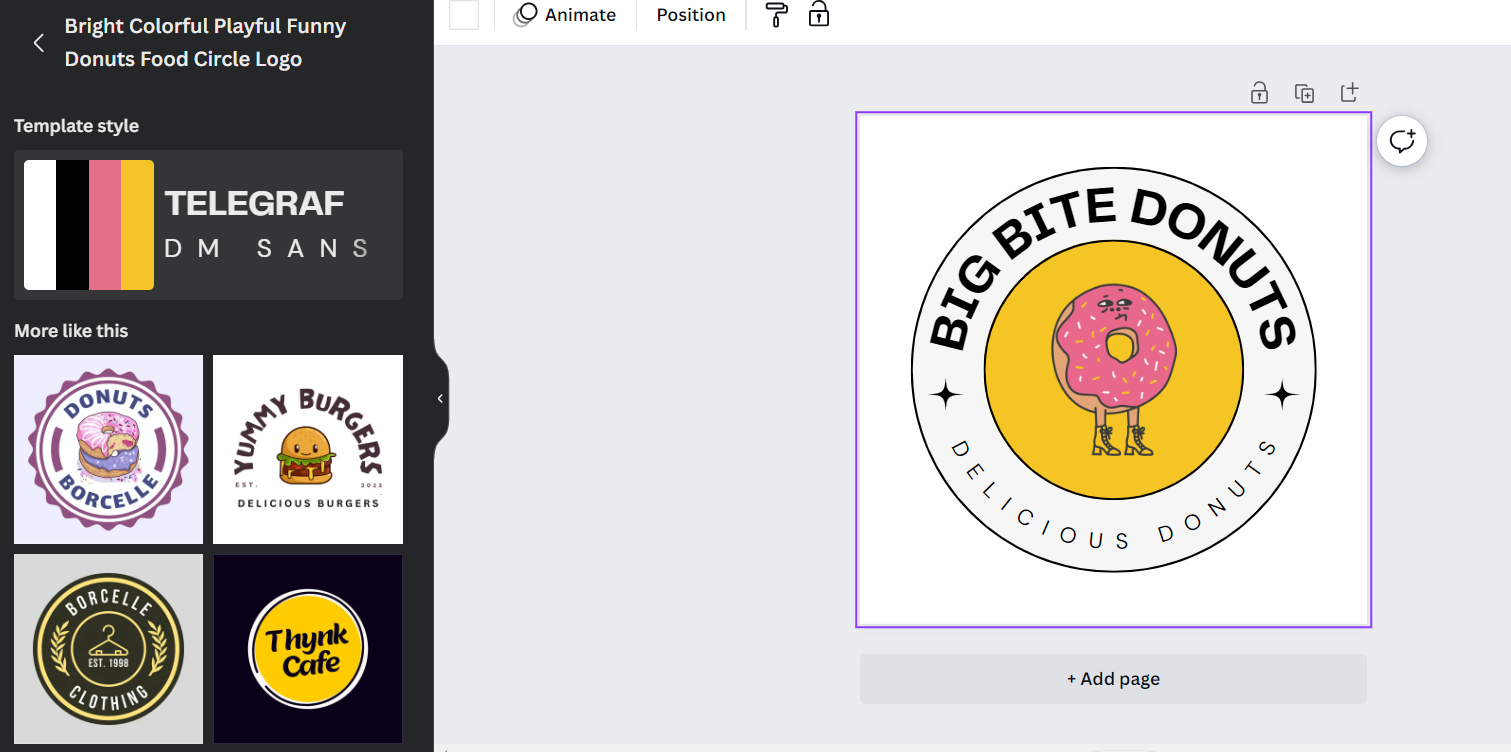Boost Your Startup: A Step-by-Step Guide to Crafting Your Brand Identity!
When it comes to starting a business, crafting your brand identity can be a daunting task. From developing a logo to establishing a unique selling proposition, there’s a lot to consider. Fortunately, with the right steps and strategies, you can create an effective and recognizable brand that will set you apart from the competition.
In this blog post, we’ll share a step-by-step guide to crafting your brand identity. From defining your mission and values to leveraging social media, we’ll cover everything you need to know to create a successful brand. Let’s dive in!
If you are looking for a boost in your entrepreneurial journey then a business coach is something you could benefit from. Reboot Coaching offers 1 to 1 sessions if you’ve hit a roadblock in your business or you feel that you need someone to give you a fresh look at it. Get in touch now for a free taster session.
Introduction to Crafting Your Brand Identity
Before we jump into the nitty-gritty of crafting your brand identity, let’s take a moment to discuss what it is and why it’s important. Your brand identity is the visual representation and personality of your business. It’s how your customers perceive you and how you want to be perceived in the marketplace. It’s also your competitive advantage, helping you stand out from the crowd and establishing trust and loyalty with your customers.
It’s important to note that your brand identity isn’t just about your logo or tagline. It’s also about your mission and values, your target audience, your brand voice, and your unique selling proposition. All of these components work together to create a unified and cohesive brand identity.
Canva is a great place to start when making a new logo, plus, it’s free!
There are a number of tools available to help you craft your brand identity:
Canva: Canva is a popular online graphic design platform that offers a wide range of templates, fonts, and design elements to create professional-looking visuals for your brand, including logos, social media graphics, and presentations.
Adobe Creative Cloud: Adobe Creative Cloud provides a suite of powerful design tools, including Photoshop, Illustrator, and InDesign. These tools offer advanced features and capabilities for creating custom graphics, illustrations, and other visual assets.
Looka: Looka is an AI-powered logo design tool that generates unique logo options based on your brand preferences. It allows you to customize colors, fonts, and symbols, enabling you to create a professional logo without the need for design skills.
Coolors: Coolors is a color palette generator that helps you choose harmonious and visually appealing color schemes for your brand. It generates color combinations and allows you to export them for use in various design projects.
Brandmark: Brandmark is an AI branding tool that assists you in creating a complete brand identity package. It generates custom logos, social media graphics, business cards, and more, tailored to your brand’s style and preferences.
Google Fonts: Google Fonts provides a vast collection of free fonts that you can use in your branding materials. It offers a wide variety of typography styles, allowing you to find the perfect font to reflect your brand personality.
Piktochart: Piktochart is an infographic and presentation tool that helps you create visually appealing graphics and slides. It can be useful for presenting data, sharing brand stories, and creating engaging visual content.
Unsplash: Unsplash is a popular platform that offers a vast library of high-quality, royalty-free images. It allows you to find and use stunning visuals to enhance your branding materials, website, and social media posts.
Social media scheduling tools: Tools like Buffer, Hootsuite, or Later help you plan and schedule your social media posts in advance. They enable you to maintain a consistent brand presence and engage with your audience effectively.
Google Analytics: Google Analytics provides valuable insights into your website’s performance, user behavior, and traffic sources. By understanding your audience and their interactions, you can refine your brand strategy and optimize your online presence.
Remember, while these tools can assist you in creating your brand identity, it’s essential to define your brand’s core values, target audience, and unique selling propositions before diving into the design process. Your brand identity should be a reflection of your business’s personality and resonate with your target market.
Benefits of Crafting Your Brand Identity
When you invest in crafting your brand identity, you’ll reap several benefits. First, it will help you differentiate yourself from the competition and make a lasting impression on your customers. Second, it will make it easier for customers to recognize your business, which will help you build trust and loyalty. Third, it will make it easier for customers to find you online and remember your brand. Finally, it will help you establish yourself as an authority in your industry and build credibility.
Define Your Brand’s Mission and Values
The first step to crafting your brand identity is to define your mission and values. Your mission statement should clearly articulate why your business exists and what you’re trying to accomplish. Your values should reflect how you want to be perceived in the marketplace and how you want to conduct business. This post by BetterUp goes into more detail about how you can how you can craft an impactful mission statement for your business.
When crafting your mission and values, it’s important to be authentic. Don’t simply copy the mission and values of another business. Think carefully about what makes your business unique and what you stand for.
Identify Your Target Audience
The next step is to identify your target audience. Who are you trying to reach with your products and services? What are their needs, interests, and desires? Knowing your target audience will help you craft a brand identity that resonates with them and speaks to their needs. This post by Marketing Evolution has more information about how you can identify your target audience.
When identifying your target audience, it’s important to be as specific as possible. For example, instead of targeting “women,” target “working moms between the ages of 25-35.” This will help you craft a more effective brand identity and create messages that will resonate with your target audience.
Establish a Brand Voice
Once you’ve identified your target audience, it’s time to establish a brand voice. Your brand voice should reflect your mission and values and be tailored to your target audience. When crafting your brand voice, consider the tone and language you want to use. Do you want to be casual and conversational or formal and professional? Do you want to be funny and lighthearted or serious and thoughtful?
The key is to be consistent with your brand voice. Your customers should be able to recognize your brand identity no matter which platform they’re on.
Develop a Brand Logo and Visual Identity
Now that you’ve established your mission and values, identified your target audience, and established a brand voice, it’s time to develop a logo and visual identity. Your logo should be simple, memorable, and recognizable. It should also reflect your brand identity and be consistent across all platforms.
Your visual identity should also be consistent. From the colours you use to the fonts and images, everything should be consistent and recognizable. This will help customers identify your brand quickly and easily.
Create a Unique Selling Proposition
Your unique selling proposition (USP) is what sets you apart from the competition. It’s the one thing that makes you stand out and makes customers choose you over the competition. When crafting your USP, think about what makes your business unique and what you offer that other businesses don’t.
Your USP should be clear and concise and should reflect your brand identity. It should also be memorable and easy to understand. This will help customers remember your brand and make them more likely to purchase from you.
It can be hard to come up with a USP for your business, below are some examples that might help!
E-commerce Clothing Store: “Free 2-day Shipping on All Orders: Get your fashion fix faster with our lightning-fast shipping, so you can enjoy the latest trends without the wait.”
Organic Food Delivery Service: “Farm-to-Table Freshness: We source our organic produce directly from local farmers, ensuring the highest quality and delivering it straight to your doorstep for a healthier and more sustainable lifestyle.”
Digital Marketing Agency: “ROI-Driven Strategies: Our data-backed marketing solutions are designed to maximize your return on investment, helping your business grow and achieve measurable results in today’s competitive digital landscape.”
Fitness App: “Personalized Workouts for Every Goal: Our app uses cutting-edge AI technology to create customized fitness plans tailored to your individual needs, making it easier than ever to reach your fitness goals and stay motivated.”
Sustainable Home Goods Store: “Eco-Conscious Living Made Easy: Discover a curated collection of stylish, eco-friendly home goods that reduce your carbon footprint without compromising on quality or design.”
Virtual Assistant Service: “24/7 Support for Busy Professionals: Our dedicated virtual assistants are available around the clock to handle your administrative tasks, scheduling, and more, giving you back valuable time to focus on what matters most.”
Language Learning Platform: “Master a Language at Your Own Pace: Our intuitive platform offers interactive lessons, personalized feedback, and progress tracking, empowering you to learn a new language efficiently and effectively, wherever you are.”
Pet Grooming Salon: “Spa-Like Experience for Your Furry Friend: Treat your beloved pet to a day of pampering with our luxurious grooming services, complete with gentle treatments, all-natural products, and a stress-free environment.”
It’s important to do research into what your USP could be
Leverage Social Media to Promote Your Brand
Once you’ve established your brand identity, it’s time to promote it. Social media is a great way to do this. Not only is it a great way to reach a wide audience, but it also allows you to engage with your customers and build relationships.
When using social media to promote your brand, focus on creating content that resonates with your target audience and reflects your brand identity. You should also focus on creating content that is engaging, informative, and entertaining. This will help you build relationships with your customers and establish trust.
Monitor Your Brand’s Performance
The last step is to monitor your brand’s performance. This will help you determine what’s working and what’s not and make adjustments accordingly. To monitor your performance, track key metrics such as website traffic, social media engagement, and customer satisfaction. This will help you determine what strategies are working and which ones need improvement.
Conclusion
Crafting your brand identity is essential for the success of your startup. From defining your mission and values to creating a unique selling proposition, there’s a lot to consider. But if you follow the steps outlined in this blog post, you can create a successful and recognizable brand that will set you apart from the competition.
Good luck with crafting your brand identity!
If you are looking for a free business coaching session then get in touch today with Reboot Coaching.





